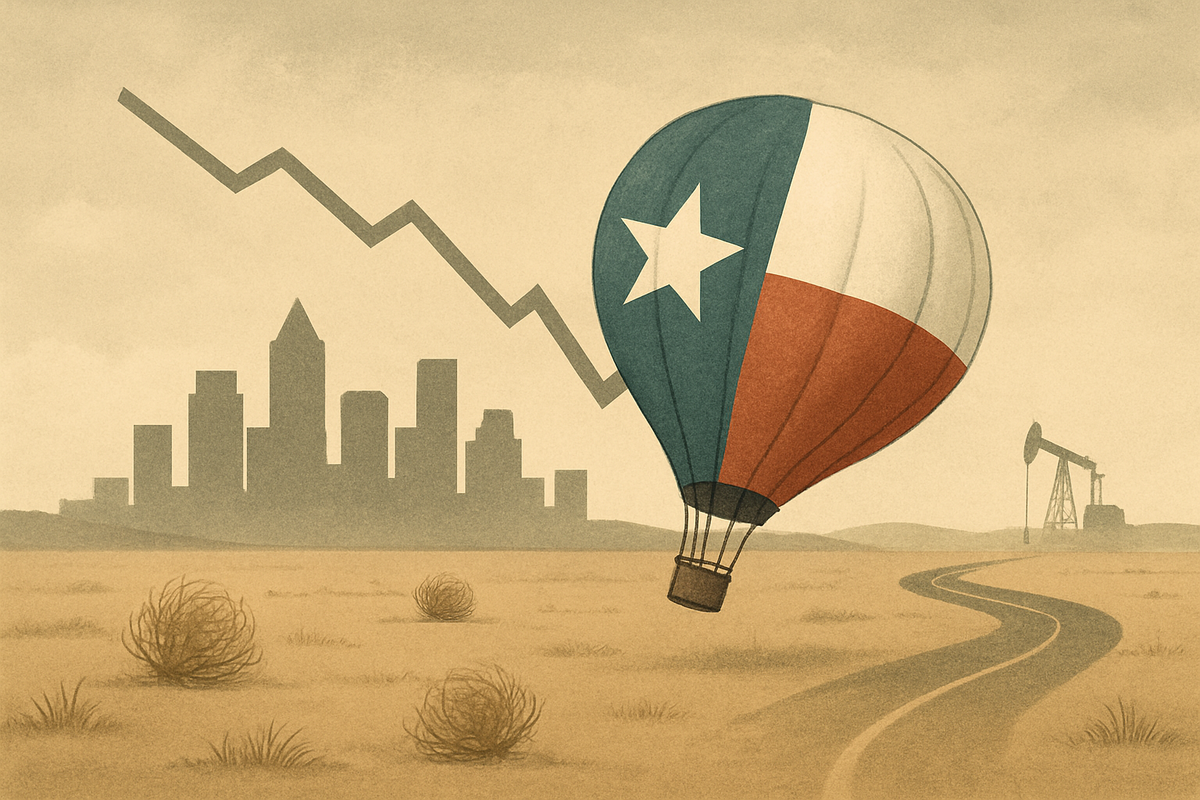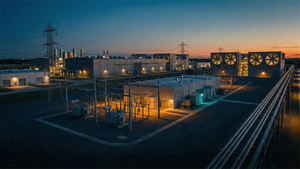
Dallas, TX – November 4, 2025 – The Federal Reserve Bank of Dallas has released its October 2025 Texas Economic Indicators report, painting a clear picture of decelerating economic growth and a subdued job market across the Lone Star State. The findings suggest that Texas, long a beacon of robust expansion, is now navigating a period of moderation, with immediate implications for businesses, consumers, and the broader financial landscape.
The report highlights a notable slowdown in overall economic activity, marked by weak employment trends in both the manufacturing and service sectors. This cooling trend, while not yet a contraction, signals a shift from the rapid growth rates Texas has enjoyed, prompting concerns about future hiring, wage pressures, and consumer spending. The Federal Reserve Bank of Dallas indicates that external factors, including trade tensions and immigration policies, are contributing to these economic headwinds.
Unpacking the Economic Slowdown: Specifics, Timeline, and Reactions
The October 2025 Texas Economic Indicators report underscores a significant moderation across various economic facets. The Texas Business Outlook Surveys, a key component of the report, revealed weakening business activity, with the overall business activity index remaining in negative territory, albeit with a slight improvement from the previous month. More critically, the job market showed clear signs of softening. The three-month moving average of the Texas Manufacturing Outlook Survey employment index dropped to 2.5, significantly below its 10-year average, indicating only marginal job creation in the manufacturing sector. Even more concerning, the Texas Service Sector Outlook Survey employment index dipped into negative territory at -2.7, signaling a contraction in service sector employment after several months of modest gains.
This economic deceleration has been building throughout 2025. Earlier in the year, the Federal Reserve Bank of Dallas had already forecasted a 2025 Texas employment growth rate of 1.6%, a figure below the state's long-term trend, reflecting growing concerns over tariffs, reduced immigration, and potential government spending cuts. Data through August and September 2025, particularly in housing and some trade metrics, consistently pointed towards a moderating trend leading up to the October report. Key players in this economic assessment include the economists and analysts at the Federal Reserve Bank of Dallas, who meticulously compile and interpret these indicators to provide a comprehensive view of the state's economic health. Initial reactions from industry observers and businesses suggest a cautious approach, with many evaluating hiring plans and investment strategies in light of the subdued outlook. The housing market, in particular, remains sluggish due to elevated mortgage rates, impacting affordability and dampening sales.
Corporate Fortunes: Winners and Losers in a Slowing Economy
A slowing Texas economy and a subdued job market will inevitably create a ripple effect across various industries, leading to both challenges and potential opportunities for public companies operating within the state. Companies heavily reliant on robust consumer spending or rapid population growth for their revenue streams are likely to face headwinds.
Retailers, particularly those in the discretionary spending categories, may see reduced sales volumes as consumer confidence potentially wanes and wage growth remains modest. For instance, Academy Sports and Outdoors (NASDAQ: ASO), a major sporting goods retailer headquartered in Texas, could experience a dip in sales if consumers tighten their belts. Similarly, homebuilders like D.R. Horton (NYSE: DHI) and Lennar Corporation (NYSE: LEN), which have significant operations in Texas, may continue to grapple with a sluggish housing market impacted by high interest rates and reduced consumer willingness to purchase new homes. The contraction in the service sector employment could also impact staffing agencies and companies that provide business services, as businesses scale back on hiring. On the other hand, companies in essential services or those offering cost-saving solutions might fare relatively better. Discount retailers or companies providing value-oriented products could see increased demand. Companies with strong balance sheets and and diversified revenue streams, less dependent solely on Texas's economic performance, will also be better positioned to weather the slowdown. Furthermore, businesses that can leverage technology to improve efficiency and reduce labor costs might gain a competitive advantage in a tight labor market.
Broader Significance: Trends, Ripple Effects, and Historical Context
The observed slowing economic growth and subdued job market in Texas are not isolated incidents but rather fit into broader national and global economic trends. Many economies are grappling with the lingering effects of inflation, higher interest rates, and geopolitical uncertainties, leading to a general deceleration in growth. Texas, with its significant energy sector, diverse manufacturing base, and rapidly growing population, often acts as a bellwether for the national economy. Its slowdown could signal a wider softening in the U.S. economic landscape, particularly impacting states with strong trade ties to Texas or similar economic structures.
The ripple effects extend to competitors and partners. Companies that supply goods or services to Texas-based businesses, even if not directly located in the state, could see reduced demand. For instance, national logistics companies with significant operations in Texas could face lower freight volumes. Regulatory and policy implications are also significant; the Federal Reserve Bank of Dallas explicitly highlighted how trade and immigration policies are weighing on the Texas economy. Increased trade tensions and stricter immigration enforcement are not only impacting the ability of Texas businesses to hire foreign-born workers but also slowing down cross-border trade, particularly with Mexico. This could prompt calls for policy adjustments to mitigate economic damage. Historically, Texas has experienced periods of economic slowdown, often tied to fluctuations in oil prices or national recessions. Comparisons to previous downturns, such as the mid-1980s oil bust or the 2008 financial crisis, while not directly analogous in cause, offer insights into the resilience and adaptability of the Texas economy. However, the current confluence of high interest rates, specific policy impacts, and a global slowdown presents a unique challenge.
What Comes Next: Navigating the Economic Landscape
In the short term, the Texas economy is likely to continue experiencing moderate growth, with a persistent subdued job market. Businesses will need to adapt their strategies, focusing on efficiency, cost control, and potentially diversifying their markets beyond state borders. Strategic pivots may include re-evaluating expansion plans, optimizing supply chains to mitigate trade policy impacts, and investing in automation to counter labor market tightness. For consumers, the modest wage growth and potential for slower job creation could lead to more cautious spending habits, impacting discretionary sectors.
Looking further ahead, the long-term possibilities hinge on several factors. A potential easing of interest rates by the Federal Reserve, should inflation be brought under control, could revitalize the housing market and stimulate investment. Shifts in trade and immigration policies could also provide a much-needed boost to certain sectors. Market opportunities may emerge for companies that can innovate to meet changing consumer demands or offer solutions that help businesses navigate a tighter economic environment. Challenges will include maintaining profitability amidst slower growth and managing talent acquisition in a more competitive labor market. Potential scenarios range from a "soft landing" where growth merely slows without tipping into a recession, to a more pronounced downturn if external shocks or policy missteps exacerbate current trends. Investors should closely monitor key indicators such as consumer spending, manufacturing output, and employment figures for signs of either stabilization or further deterioration.
Comprehensive Wrap-Up: A Period of Adjustment
The October 2025 Texas Economic Indicators report serves as a critical assessment, highlighting a clear shift towards slowing economic growth and a subdued job market in Texas. The key takeaways emphasize that while the state's economy is not in freefall, it is undoubtedly entering a period of adjustment. This moderation is influenced by a combination of domestic factors, such as elevated interest rates impacting the housing market, and external forces, including trade tensions and immigration policies.
Moving forward, the market will likely be characterized by increased caution and strategic re-evaluation. Businesses, particularly those heavily invested in real estate, retail, and certain service sectors, will need to demonstrate agility and resilience. Investors should recognize that the era of exceptionally rapid, broad-based growth in Texas may be temporarily on hold. The lasting impact of this period will depend on how effectively policymakers address the identified headwinds and how businesses adapt to the evolving economic landscape. In the coming months, investors should closely watch the Federal Reserve's monetary policy decisions, global trade developments, and further releases from the Federal Reserve Bank of Dallas for clearer signals on the trajectory of the Texas economy. The current environment calls for a nuanced understanding of economic indicators and a proactive approach to investment and business strategy.
This content is intended for informational purposes only and is not financial advice

















